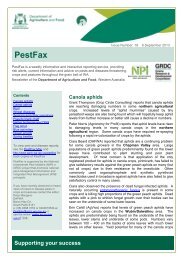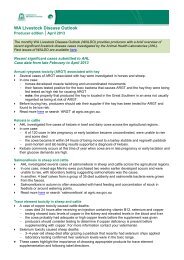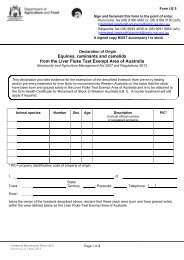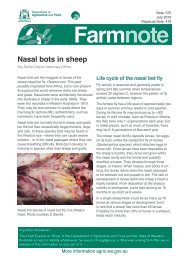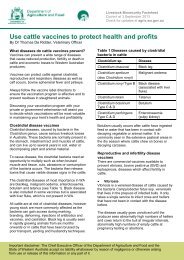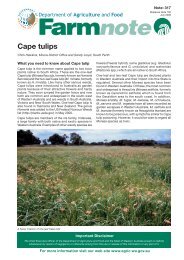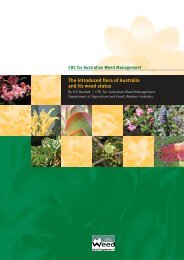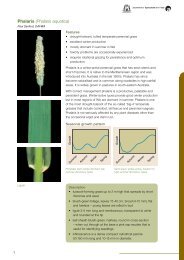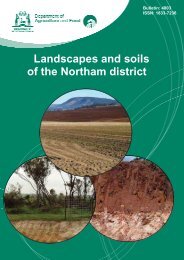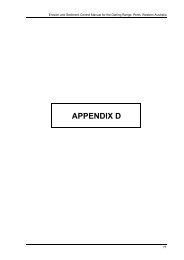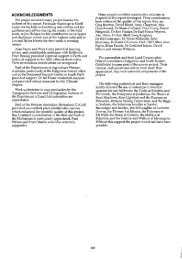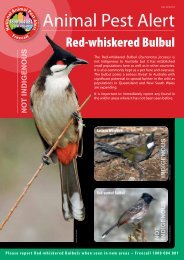The wheat book : principles and practice - Department of Agriculture ...
The wheat book : principles and practice - Department of Agriculture ...
The wheat book : principles and practice - Department of Agriculture ...
Create successful ePaper yourself
Turn your PDF publications into a flip-book with our unique Google optimized e-Paper software.
CHAPTER 10 – DISEASES THE WHEAT BOOK<br />
OCCURRENCE, RECOGNITION AND CONTROL (continued)<br />
because considerable BYDV spread can occur with low<br />
aphid numbers, <strong>and</strong> virus symptoms are difficult to see in<br />
winter. Five years <strong>of</strong> insecticide experiments with a range <strong>of</strong><br />
cereals in WA, showed that foliar sprays <strong>of</strong> synthetic<br />
pyrethroids at 3 <strong>and</strong> 7 weeks after full crop emergence<br />
decreased BYDV spread by up to 87% <strong>and</strong> increased grain<br />
yields by up to 41%. <strong>The</strong>se pyrethroids (e.g. alphacypermethrin<br />
(Dominex or Fastac) or beta-cyfluthrin<br />
(Bulldock)) control BYDV better than pirimicarb or<br />
dimethoate because they not only kill aphids but also have<br />
an anti-feeding effect that deters new aphids from feeding<br />
for a further 3-4 weeks. <strong>The</strong> cost <strong>of</strong> spraying can <strong>of</strong>ten be<br />
reduced, as pyrethroids may be tank-mixed with many <strong>of</strong><br />
the autumn-applied herbicides. Controlling aphids with<br />
synthetic pyrethroids early to stop BYDV spread can also<br />
prevent them building up sufficiently to cause feeding<br />
damage in spring. However, in bad aphid years<br />
applications <strong>of</strong> insecticides from other chemical groups<br />
may be required in spring if feeding damage becomes a<br />
problem in cereal crops.<br />
210



